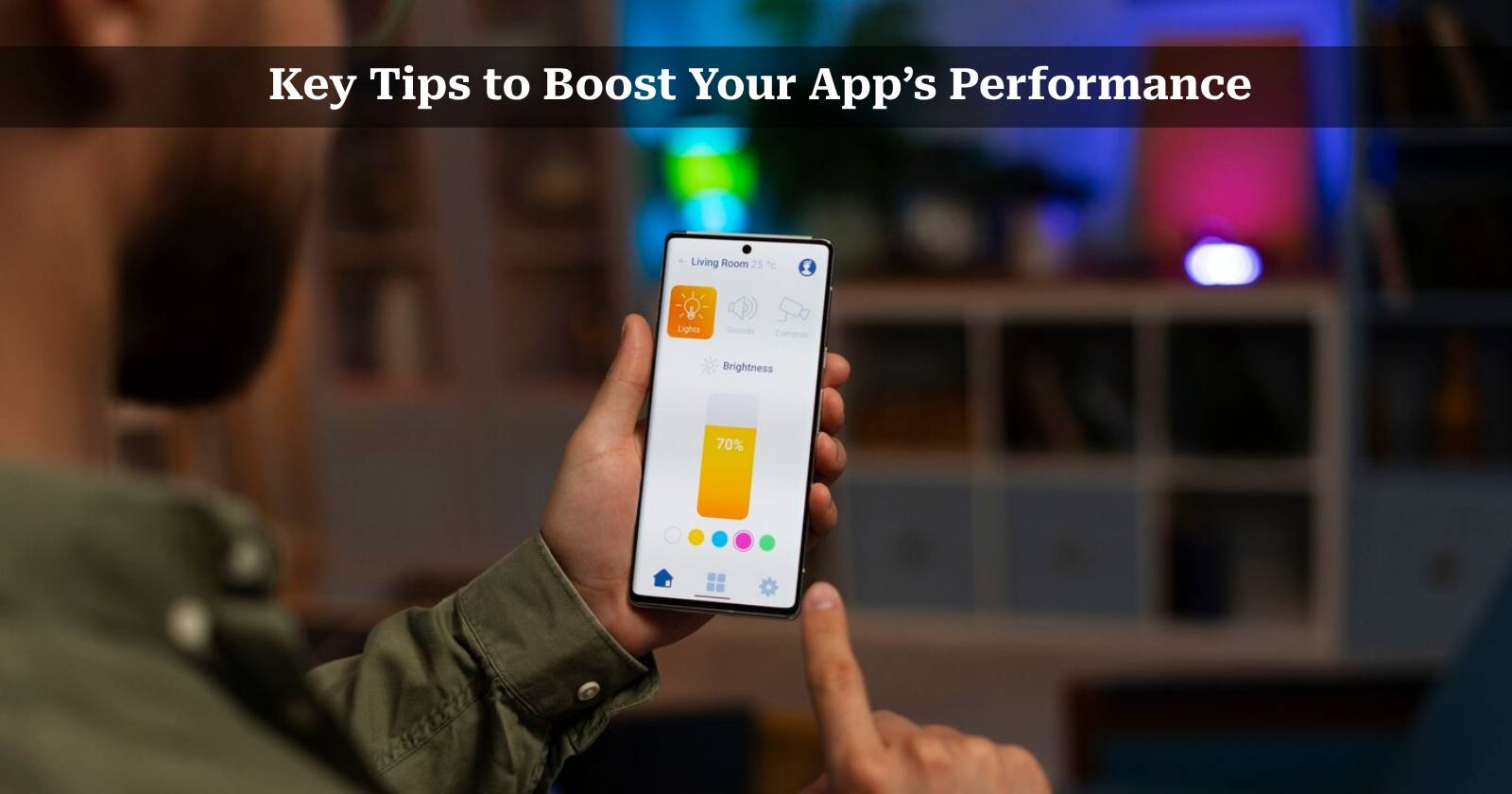How to Improve App Performance and Keep Users Engaged
 Sofia Murphy
Sofia Murphy
We’ve all been there—using an app that’s slow, glitchy, or just doesn’t work the way it should. Frustrating, right? And chances are, when that happens, most of us don’t stick around. We close it, delete it, and move on to something better.
As an app developer, this is the last thing you want for your users. Performance is everything. Whether your app runs smoothly or crashes at crucial moments can be the difference between a loyal user base and losing them to a competitor. In this blog, we’ll share practical tips on how to boost your app’s performance, reduce those annoying lags, and keep users coming back for more.
1. Why App Performance is Key to User Retention
App performance and user experience go hand-in-hand. If your app is sluggish or glitchy, users will get frustrated and likely delete it. Research shows that 70% of users will abandon an app if it takes too long to load. In fact, users expect an app to respond within just 2 seconds. Anything longer than that, and they’re likely to switch to a competitor.
It’s not just about speed, though. Stability, smooth navigation, efficient resource usage, and battery consumption all play a huge role in how users feel about your app. The better your app performs, the longer your users will stick around.
2. Find and Fix Performance Bottlenecks
When your app is slow, it’s usually because of performance bottlenecks—things like slow load times, unresponsive interfaces, or excessive battery drain. The good news is that most of these issues can be fixed with the right approach.
Tackling Slow Load Times
First impressions matter, and if your app takes too long to load, users won’t wait around. Ideally, your app should load in under 2-3 seconds. Anything longer risks losing users.
How to Fix It:
Lazy Loading: Only load the essential parts of your app first, and let the rest load as needed. For example, you could prioritize loading the main UI first and bring in images or secondary content later.
Reduce App Size: Compress images, minify code, and remove unnecessary assets to reduce the app’s size and speed up loading.
Prefetching: Predict what the user will do next and load that data in advance, so the app feels quicker.
Fixing Unresponsive Interfaces
Users expect instant feedback when they interact with your app. If it lags or freezes, that’s a big red flag.
How to Fix It:
Asynchronous Processing: Handle heavy tasks in the background without blocking the main interface. This ensures users can interact with your app without delays.
Smooth Animations: Keep animations running at a steady 60 frames per second (FPS) for a seamless experience. If animations stutter, it breaks the flow for users.
Cutting Down on Battery and Resource Use
Nothing annoys users more than an app that drains their battery. Heavy battery usage can lead to quick uninstalls.
How to Fix It:
Limit Background Tasks: Don’t run unnecessary processes in the background. Only use background services when absolutely necessary, like for location tracking or syncing.
Efficient Resource Use: Make sure to release any resources your app isn’t using. Memory leaks can slow down your app and even cause it to crash.
3. Optimize Your App’s Data Management
Handling data efficiently is crucial to your app’s performance. Poor data management can slow everything down, from responsiveness to resource use.
Smart Caching
One easy way to boost performance is by caching data. Instead of constantly fetching data from the server, store it locally and retrieve it when needed. This reduces load times and minimizes server requests.
How to Implement It:
In-memory Caching: Store frequently used data, like images or UI elements, in memory. This speeds up retrieval and keeps the app responsive.
Offline Caching: Cache some data for offline use, so users don’t always need to rely on network connectivity.
Reducing API Calls
Making too many API calls can slow your app down and drain user data. It’s important to limit them as much as possible.
How to Fix It:
Batching Requests: Instead of sending multiple API requests, bundle them into one larger request.
Data Compression: Compress the data sent to and from the server. This reduces bandwidth usage and speeds up the process.
Handling Large Data Sets
If your app handles large amounts of data (like social media posts or media files), you’ll need to make sure it doesn’t slow down.
How to Fix It:
Pagination: Load data in smaller chunks instead of all at once. For example, load only a few items at a time as the user scrolls.
Optimize Database Queries: Ensure your app’s database queries are optimized. Slow queries can bog down the app, especially with large datasets.
4. Make Your App Compatible Across Devices
One challenge in app development is ensuring your app works well on different devices and operating systems. Android app performance optimization is particularly important due to the wide range of devices available.
Addressing Device Fragmentation
There’s a huge difference in performance between high-end and low-end devices. You need to make sure your app runs smoothly across the board.
How to Fix It:
Responsive Design: Use flexible layouts and UI elements that adapt to different screen sizes and resolutions.
Test on Multiple Devices: Use services like Firebase Test Lab to test your app on a variety of devices without having to own them all.
Keeping Up with OS Updates
Every time a new version of Android or iOS is released, it can affect how your app runs. Stay on top of updates to ensure your app keeps running smoothly.
How to Fix It:
- Backward Compatibility: Make sure your app works well with older versions of Android and iOS, but also take advantage of the improvements in the latest versions.
5. Monitor Performance with Analytics
You won’t always know about performance issues until they start affecting users. That’s why it’s important to use analytics tools to monitor your app’s performance in real-time.
Real-time Monitoring Tools
Tools like Firebase Crashlytics and Sentry help track issues as they happen. This way, you can address problems before they spread to more users.
Error Reporting
Automatically log errors and crashes to identify performance problems. This lets you fix issues before they affect a large number of users.
User Feedback
Sometimes analytics don’t tell the whole story. Encourage users to report performance issues directly through the app, so you can get real-world feedback.
6. Regular Updates and Maintenance
App performance isn’t something you fix once and forget about. Over time, new OS versions, third-party updates, and user behavior changes will affect how your app performs. That’s why regular updates are crucial.
Routine Bug Fixes
Make sure to regularly update your app to fix bugs and improve performance. Small, frequent updates are often better than large, infrequent ones.
Performance Enhancements
Continuously work on improving your app’s speed and resource use. Optimize your backend and stay up-to-date with the latest technology.
Final Thoughts
Improving your app’s performance is essential for keeping users engaged and happy. By addressing bottlenecks, managing data more efficiently, ensuring compatibility across devices, and using real-time analytics, you can create an app that performs well and stands out in the crowded marketplace. Regular updates and ongoing maintenance will keep your app running smoothly and ensure your users stick around.
Subscribe to my newsletter
Read articles from Sofia Murphy directly inside your inbox. Subscribe to the newsletter, and don't miss out.
Written by

Sofia Murphy
Sofia Murphy
I am Sofia Murphy, a mobile apps consultant. I voluntarily write blogs on mobile apps architecture, design, UI/UX, product engineering, and programming languages.